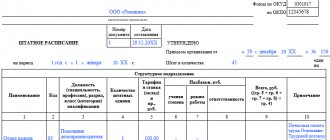It would seem that the concept of labor protection is quite simple and does not require definition; everything is clear and precise in protecting the work of the organization’s employees.
And working every day, a labor safety specialist carries out a huge amount of activities and develops a bunch of documents in order to save the lives of workers and “not set up” his employer.
Although very often, unfortunately, labor protection specialists in the organization are not given due attention and often have to defend their point of view and prove that they must strive to comply with the requirements of Labor legislation.
Organizations that more or less comply with the requirements of the Labor Code of the Russian Federation in terms of labor protection, unfortunately, are in the minority, and here not always everything depends only on the employer. Often, labor protection specialists themselves or those performing these duties do not understand the goals and objectives of labor protection.
With this note I want to remind you what is included in the concept of labor protection, because it is not only a heap of papers, most of which are simply collecting dust on the shelves. Therefore, I suggest reading this note to the end, and if you have anything to add, your thoughts, position, write about it in the comments, dialogue is welcome!
What is labor protection
Occupational safety and health is a set of rules of behavior in the workplace that take into account the specifics of the enterprise and individual work. These codes are necessary to maintain the safety of company employees and reduce the likelihood of injury.
Labor protection at the enterprise
The complex includes legal framework, measures of socio-economic and organizational and technical nature, measures for sanitary and hygienic prevention.
Therefore, protection does not include blind implementation of existing rules, but comprehensive measures to improve working conditions and prevent the occurrence of emergencies.
Responsibilities of the employee to use protective equipment
Each employee who is legally familiar with labor safety rules and performs his or her work in conditions requiring the use of protective equipment is obliged to:
- use protective equipment throughout the entire work shift;
- use protective equipment as prescribed in the rules of their use;
- inform the employer about all breakdowns and malfunctions of protective devices, and this must be done in a timely manner;
- use protective equipment with care;
- re-train on how to use the protection if facts of its incorrect use are discovered or the modification is updated.
What is safety precautions and how does it differ from occupational safety?
Occupational safety: what is it, concept
Many people confuse the concept of safety with labor protection. Therefore, it is worth taking a closer look at their differences.
Reference! Safety precautions are an outdated concept that denotes part of the OT functions. Actions are aimed at preventing work-related injuries and illnesses associated with it. TB is not expressed in legal norms, but consists of specific regulations, separate for each industry.
Violation of TB does not entail legal consequences. Failure to comply with labor safety rules will result in disciplinary or criminal liability. Therefore, TB is only a specific section of OT.
Why you need to follow safety precautions in the workplace
Safe working conditions: what is it, definition
It is recommended to follow safety precautions for the following reasons:
- To preserve the life and health of workers;
- To avoid harming the health of other employees;
- To avoid financial penalties. Many organizations do not pay wages to violators of discipline as a punishment;
- To prevent deterioration in the quality of the company's products or services;
- To prevent dismissal. The company has the right to terminate the employment contract if the employee regularly violates established safety rules.
Studying OT
Organization of work with personnel on labor protection
The leading direction for ensuring industrial safety is working with the company's employees. This allows you to hire people with suitable qualifications for specific working conditions. Work with employees is also carried out to teach them the necessary skills and knowledge before they begin independent work. During working hours, the information received must be preserved and actively used.
Fire mode: what is it, definition
If production conditions have changed, it is necessary to conduct re-training taking into account the new circumstances. It is also important to regularly monitor the professional skills of all employees while working.
Reference! By making employees responsible for complying with company rules, work-related injuries and other negative consequences can be avoided.
Responsibilities of the employee to warn management about emergency situations
Each employee of the enterprise in the event of an injury or manifestation of an occupational disease in himself or one of his colleagues is obliged to notify management about this. The same must be done if, during work, circumstances suddenly arise that threaten the health and lives of people.
If an injury occurs, the victim must be given first aid and immediately taken to the nearest medical center. In the event of a danger that threatens people or the production process, each employee must immediately stop performing his duties and report this to his immediate superiors.
What is the occupational safety service responsible for?
The responsibilities and tasks of the OSH service representative include:
- Organization of an investigation, analysis of the causes of emergencies, development of recommendations for the prevention of such situations;
- Creation and implementation of programs to improve the quality of working conditions;
- Providing support to departments in matters of labor protection;
- Assistance in preparing documents and lists related to occupational safety, including papers for medical examination, issuance of special clothing, contracts and agreements regarding changes in work schedule;
- Regularly fill out and submit a safety report, store all documents related to this area.;
- Organize safety training for company employees;
- Monitor and check the health and safety conditions in the company's departments.
Conducting OT training
The service also organizes and conducts safety briefings.
OT representatives in the company are responsible for the above aspects.
System elements
It should be noted that labor protection cannot be identified with safety precautions, industrial sanitation, occupational hygiene, because they are elements of labor protection, its components. Thus, the labor protection system includes the following elements (Labour protection does not include industrial safety):
- Industrial sanitation
is defined as a system of organizational measures and technical means that prevent or reduce the impact of harmful production factors on workers. - Occupational hygiene
is characterized as preventive medicine that studies the conditions and nature of work, their impact on the health and functional state of a person and develops scientific foundations and practical measures aimed at preventing the harmful and dangerous effects of factors in the working environment and the labor process on workers. - Electrical safety
is the state of worker protection from the harmful and dangerous effects of electric current, electric arc, electromagnetic field and static electricity. - Fire safety
is the state of protection of the individual, property of society and the state from fires.
correction: Fire safety is not within the competence of the Ministry of Labor. This is the sphere of the Ministry of Emergency Situations. The Ministry of Emergency Situations regulates, controls and checks.
- Life safety
is the science of comfortable and safe human interaction with the technosphere. - Occupational safety management
is the organization of work to ensure safety, reduce injuries and accidents, occupational diseases, improve working conditions based on a set of tasks to create safe and harmless working conditions. Based on the application of legislative regulations in the field of labor protection. - Occupational risk management
is a set of interrelated activities, including measures to identify, assess and reduce levels of occupational risks. The regulations on the occupational risk management system are approved by the federal executive body, which carries out the functions of developing state policy and legal regulation in the field of labor, taking into account the opinion of the Russian Tripartite Commission for the Regulation of Social and Labor Relations (LC RF).
Development of labor protection instructions
To develop instructions, the specifics of a particular job are taken into account. It is imperative to take into account Article 212 of the Labor Code of the Russian Federation. When developing, they also rely on the safety requirements set out in the organization’s documentation associated with the equipment used.
Reference! The approval of instructions is carried out by the head of the company. He needs to take into account the union's recommendations on this issue.
While new instructions are being developed and not yet applied in practice, it is permissible to use temporary instructions that serve as a replacement for the main ones. They cease to apply as soon as the new rules are approved.
Important! At least every 5 years, the manager must organize a review of existing instructions. You can run this process more often if there are specific reasons for doing so.
Early revision is possible due to changes in working conditions, the introduction of new equipment, due to the requirements of labor organizations of the Russian Federation. Also, new development of instructions begins after analyzing accidents that occurred in the organization.
If labor conditions remain unchanged, the current document with rules and regulations is extended for the next period. The documents are kept by the manager. The instructions may be given to employees for review or posted in a place accessible to employees.
Rules and instructions on labor protection
OSH rules concern technological processes, equipment, premises and materials in production. It also contains information on the use of personal protective equipment. The requirements for testing safety knowledge and selecting candidates for various positions are reflected.
Such rules are divided into sectoral and inter-industry. The latter are approved by the Ministry of Labor of the Russian Federation. Based on these instructions, standard ones are developed, which become the basis for creating acts of norms and rules in a particular organization.
The instructions reflect safety precautions for the entire work process, from the beginning of the activity and after its completion, as well as in the event of an emergency.
Collective and individual protective equipment
In many industries, work is impossible without personal protective equipment and every employee must be able to use them. In order to avoid the harmful effects of hazardous factors, personnel are required to use various devices to protect the head, skin, respiratory organs, eyes, hands, and feet. When carrying out work at height, it is also necessary to use certain protective equipment.
Is certification of occupational safety and health work in an organization?
Personal protection
All personal protective equipment is divided into three categories:
- special shoes;
- special clothing;
- other means.
If everything is clear with protective clothing and safety footwear, then a little more detail should be said about other protective equipment . These include:
- for hands: gaiters, gloves, mittens;
- for eyes: special safety glasses;
- for hearing organs: headphones, earplugs;
- for the face and head: helmets, shields, hard hats;
- for the respiratory system: gas masks, cotton-gauze bandages, respirators;
- for skin: cleansers and special creams;
- for high-altitude work - cables and safety belts.
How to create a training program for occupational safety ?
Collective defense
If a group of people works in dangerous conditions, whether natural or man-made, then they must be provided with collective protection. What it is? Collective protection means:
- devices for normalizing lighting;
- devices for improving the air environment;
- protective equipment against hazardous production factors.
In cases where, by the time they began performing their job duties, employees were not provided with working protective equipment, as well as, if necessary, special clothing and safety footwear, they have the right to refuse the functions assigned to them. In addition, all employees using protective equipment must be instructed in advance on how to use them correctly, and training must be both theoretical and practical.
Journal of occupational safety instructions
It is not necessary to conduct it. But when issuing and receiving a document, this fact must be reflected on paper. Both the issuer and the recipient must indicate their full name and position, leave a signature and decipher it. You should also indicate the date when the document was transferred.
The key purpose of the journal is to quickly find the necessary information and simplify the circulation of documents. Information may be contained on paper when the instruction was registered and approved. They reflect in the journal the assignment of documents, information about employees who have completed the necessary instruction or training, and the timing of scheduled inspections.
The document helps in the event of an emergency. The log allows you to find out whether the employee received the necessary training, when it was and who taught the course.
Important! Despite the fact that it is not necessary to keep a log, it is necessary to strictly draw up and approve safety instructions.
Occupational safety: organization of personnel training
The level of occupational safety training must fully correspond to the position held by the employee. Therefore, the employer must regularly and timely organize activities for training or retraining of personnel. Based on the results, a knowledge test is required.
It is unacceptable to create a formal appearance of learning. This could trigger a production emergency. All company employees, including those in management positions, undergo training. Based on the results of the training and knowledge testing, a protocol must be drawn up.
Journal of issuance of occupational safety certificates
Such a log serves as a display of information about occupational safety certificates issued at the enterprise, as well as their registration. The document can be issued to the owner against the signature of the responsible person. After this, the accomplished fact is reflected on paper. The log can serve as proof that the employee has completed training and received a certificate. This is necessary for various checks, and the document itself will allow you to avoid some fines.
OT certificate
Labor safety audit
An audit is an independent and comprehensive check of the occupational safety system that exists at the enterprise. This event is organized and conducted by a special expert. Among the audit objectives are:
- Checking the compliance of the existing system in the organization with labor protection laws and regulations. The specifics of the company’s work must be taken into account;
- Establishing the effectiveness of individual parts of the security policy;
- Reducing the risk of injury in the organization.
The analysis is carried out in several stages. Be sure to check local regulations and evaluate how complete the information provided is. The expert conducting the audit also makes a list of recommendations to improve the safety situation at work. Based on the inspection carried out, an independent expert opinion is drawn up and issued.
Important! The resulting report fully reflects the state of labor safety at the enterprise.
Safety training
The occupational safety department must train all employees to provide first aid to victims of accidents (Letter of the Ministry of Labor dated 07/07/2017 No. 15-2/B-1755). A doctor, preferably a traumatologist, is invited to organize such training. But you must develop the instructions yourself. To ensure occupational safety at a motor transport enterprise, you can take the standard instructions TOI R-200-22-95, approved. By Order of the Ministry of Transport dated February 27, 1996 No. 16.
A labor protection specialist must monitor the confirmation of the qualifications of certain categories of workers working in harmful and dangerous working conditions. They have their own separate system of permission to work. We are talking about welders, electricians and other specialties. I refer those interested to the Rules for the Technical Operation of Electrical Installations, approved. By Order of the Ministry of Energy dated January 13, 2003 No. 6, GOSTs 53690 and R 53526 - on the certification of welders and other regulatory documents.
Outsourcing of labor protection
Outsourcing in this area refers to the performance of a number of functions of an OT specialist by another organization. Delegation can be partial or complete. To transfer functions, it is necessary to draw up and conclude an agreement between the customer and another organization that provides such services. Outsourcing is necessary to improve the efficiency of OSH work and reduce the financial burden.
Specialists in this field are engaged in organizing employee training, conducting briefings, developing and implementing measures to reduce the likelihood of an emergency.
Inspection of labor protection at the enterprise
What will the GIT check according to the OSMS?
During scheduled inspections of organizations, the inspector is guided by the GIT checklists. To check the occupational safety management system, there is checklist No. 31.
This sheet contains only two points: “The inspector must check the presence in the organization of a regulation on the occupational safety management system (OSMS), approved by the order, and the presence of a policy in the field of occupational safety.”
During unscheduled inspections in connection with accidents, the inspector is guided by Order of Rostrud 77 dated March 21, 2019 “Methodological recommendations for OSMS”. The inspector will analyze the organization's OSHS documents and workplace conditions for compliance with the standard OSHS regulations. Accordingly, the work will be checked according to special assessments and pro-free discounts.
Everything that the inspector will check is indicated in the flowchart of Rostrud Order 77:
Responsibility for violation of labor protection requirements
For violations in this area, the law provides for several types of liability, including:
- Disciplinary. In case of violation of labor discipline, punishment may be imposed in the form of a reprimand, reprimand or dismissal;
- Administrative. Consists of imposing a fine on an official;
- Material. Occurs when the company suffered financial loss due to the fault of the employee;
- Criminal.
Reference! Financial liability is expressed in compensation for losses. Therefore, at the same time, the employee may also be subject to disciplinary, administrative and other liability.
New in legislation
Since 2021, changes have affected the rules for operating power plants. Now control over compliance with occupational safety regulations when using such equipment is carried out by Gosenergonadzor.
There have also been changes in safety regulations when performing work at heights, in the construction industry, and in the operation of certain tools. For example, ladders used for work at height must undergo preliminary tests. Hand tools must be in good condition and fully meet safety requirements.
Reference! Also, now a special assessment of working conditions is carried out at all enterprises without exception. It cannot be carried out in several stages, but must be holistic.
Occupational health and safety should occupy a significant place in any organization. The term consists of many concepts and sections. Each of them allows us to ensure the safe activity of every worker in any field, including an engineer, a researcher, etc. Basic recommendations and rules can be found in the Labor Code, which reflects GOSTs and standards relating to safety at work. Regular inspections of the quality and effectiveness of occupational safety and health allow us to identify violations and provide recommendations for their elimination. OT is especially important in preschool institutions, where a large number of children are constantly staying in the institution. Therefore, the organization of labor protection and safety, which is part of it, should be simple, correct and understandable for employees.
Special assessment of working conditions
Art. 3 of Federal Law No. 426 of December 28, 2013 “On special assessment of working conditions” (hereinafter referred to as the Law on Special Assessment) defines a special assessment of working conditions (hereinafter referred to as special assessment) as a set of consistent measures to identify harmful and (or) dangerous production factors and assess the level of their impact on the employee. Based on the results of the special assessment, classes and subclasses of working conditions in the workplace are established. Administrative liability is provided for failure to conduct a special assessment (Article 5.27.1 of the Code of Administrative Offenses of the Russian Federation).
Let's consider some principles of special assessment:
- it is aimed at ensuring the safety of workers during their work activities;
- responsibilities for organizing and financing the special assessment are assigned to the employer;
- it is carried out by a special organization that meets all the necessary requirements and is included in the register of organizations that can carry out special assessments;
- the purpose of the special assessment is to compare working conditions at a specific workplace with state regulatory labor protection requirements;
- its result is a report that all employees must be familiar with;
- When conducting a special assessment, the identification (that is, identification and description) of potentially harmful and dangerous production factors at the employer’s workplaces occurs.
According to Art. 209 of the Labor Code of the Russian Federation, a harmful production factor is a factor the impact of which on an employee can lead to illness; hazardous production factor - a factor the impact of which can lead to injury to an employee.
To identify harmful and dangerous factors, an expert from an organization conducting a special assessment may:
- study of documentation on technological processes, raw materials used;
- workplace inspection;
- familiarization with the work actually performed by the employee at his workplace, etc.
Based on the identification results, workplaces in which no harmful or dangerous production factors have been identified are declared to the body authorized to conduct federal state supervision of compliance with labor legislation (federal labor inspectorate).
This declaration of compliance of working conditions in the workplace with state regulatory labor protection requirements is valid for 5 years.
All harmful and dangerous production factors that have been identified are subject to research and measurement by experts, as a result of which working conditions in the workplace are assigned to classes according to the degree of harmfulness and (or) danger. Measurements are carried out by a testing laboratory and experts from the organization conducting the special assessment. Measurement methods are independently determined by the organization conducting the special assessment, but they must comply with the legislation of the Russian Federation on ensuring the uniformity of measurements.
The following factors of the working environment are subject to research and measurement:
- physical factors (noise, vibration, air temperature, relative humidity, etc.);
- chemical factors (substances and mixtures in the air of the working area);
- biological factors (microorganisms that can become pathogens of infectious diseases).
As well as such harmful and (or) dangerous factors of the labor process as:
- severity of the labor process (indicators of physical activity);
- tension of the labor process (indicators of the load on the central nervous system and sensory organs of the employee).
The result of research and measurement of working conditions is the assignment of a class to a particular workplace according to the degree of harmfulness and (or) danger.
In accordance with Art. 14 of the Law on Special Assessment, working conditions according to the degree of harmfulness and (or) danger are divided into:
Class 1 – optimal working conditions – the employee is not exposed to harmful or hazardous production factors or does not exceed established standards;
Class 2 – acceptable working conditions – the state of the human body, altered by harmful or dangerous production factors, is restored during rest or by the beginning of the next working day;
Class 3 – harmful working conditions – exposure to harmful and (or) hazardous production factors exceeds established standards:
- subclass 3.1 – the state of the employee’s body is restored if the influence of these factors ceases for a longer period than before the start of the next working day, the risk of health damage increases;
- subclass 3.2 – working conditions can cause persistent functional changes in the body, leading to occupational diseases of mild severity (without loss of professional ability to work) after a long work experience (15 years or more);
- subclass 3.3 – working conditions leading to the appearance and development of occupational diseases of mild and moderate severity during the period of working activity (with loss of professional ability);
- subclass 3.4 – working conditions can lead to the emergence and development of severe forms of occupational diseases (with loss of general ability to work);
Class 4 – hazardous working conditions – the level of exposure of an employee to harmful and (or) hazardous production factors is such that it poses a threat to the employee’s life or a high risk of developing an acute occupational disease.
When workers employed in workplaces with hazardous working conditions use individual and collective protective equipment, the impact on the body of harmful and dangerous production factors is reduced, and the hazard class can be reduced.
Guarantees of the right of workers to work in conditions that meet labor protection requirements, enshrined in Art. 220 of the Labor Code of the Russian Federation, give the employee the opportunity to refuse to perform work if a danger to his life and health arises, and the employer is obliged to provide the employee with another job while such a danger is eliminated.
In addition to the special assessment, there is another procedure - the state examination of working conditions (hereinafter referred to as the state examination), which is an assessment of the compliance of the object of examination with state regulatory labor protection requirements.
In accordance with Art. 216.1 of the Labor Code of the Russian Federation, state examination is carried out for the purpose of assessing:
- quality of special assessment;
- the correctness of providing employees with guarantees and compensation for working under harmful or dangerous working conditions;
- actual working conditions of workers.
State examination is carried out on the basis of determinations of judicial bodies, appeals from executive authorities, employers, associations of employers, workers, trade unions, their associations, other representative bodies authorized by employees, bodies of the Social Insurance Fund of the Russian Federation. For example, when conducting a state examination in order to assess the correctness of providing guarantees and compensation to employees for working in harmful or dangerous working conditions, the state expert analyzes the special assessment report, as well as the volume and procedure for providing guarantees and compensation to the employee:
- shortened working week;
- annual additional leave;
- increased wages, etc.







